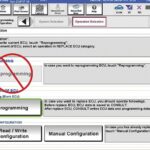The Cummins ISX engine is known for its power and reliability, but like any diesel engine, it can experience issues with its Diesel Particulate Filter (DPF). Understanding how the DPF functions, why it might require removal, and the implications of doing so are crucial for maintaining optimal engine performance. This article delves into the complexities of the Cummins ISX DPF system, focusing on the process and considerations surrounding DPF removal.
Cummins ISX DPF System Overview
The DPF is a critical component of the Cummins ISX emissions control system. Its primary function is to trap soot and particulate matter from the exhaust stream, preventing their release into the atmosphere. The DPF accomplishes this through a process of filtration and regeneration. During normal operation, soot particles accumulate within the filter. As the filter loads, the engine initiates a regeneration cycle to burn off the accumulated soot, converting it into harmless ash.
Why Remove a DPF from a Cummins ISX?
Several factors can lead to the decision to remove a DPF from a Cummins ISX engine. Common reasons include:
- Recurring Regeneration Issues: Frequent regeneration cycles can disrupt operations, leading to downtime and decreased fuel efficiency. Problems with the regeneration process itself can necessitate DPF removal.
- Sensor Malfunctions: Fa faulty sensors within the DPF system can trigger unnecessary regenerations or prevent the system from functioning correctly, ultimately impacting engine performance.
- Excessive Backpressure: A clogged DPF can create excessive backpressure in the exhaust system, leading to reduced power output and potential engine damage.
- Cost Considerations: Repairing or replacing a damaged DPF can be expensive. In some cases, removal and replacement with a delete pipe might be a more cost-effective solution.
The Process of DPF Removal
Removing a DPF from a Cummins ISX typically involves:
- Physical Removal: The DPF canister is physically removed from the exhaust system.
- Software Reprogramming: The engine’s Electronic Control Module (ECM) needs to be reprogrammed to prevent fault codes and ensure proper engine operation without the DPF. This often involves using specialized software to delete the DPF from the ECM’s programming.
- Exhaust Modifications: A delete pipe or other exhaust modifications might be necessary to replace the removed DPF and maintain proper exhaust flow.
Considerations and Implications of DPF Removal
While DPF removal might offer certain benefits, it’s essential to consider the potential implications:
- Emissions Regulations: Removing a DPF will result in the vehicle no longer meeting emissions standards. This can have legal consequences, particularly in areas with strict emissions regulations. It’s crucial to verify local laws and regulations before proceeding with DPF removal.
- Environmental Impact: The DPF plays a vital role in reducing harmful diesel emissions. Removing it will increase particulate matter released into the atmosphere, contributing to air pollution.
- Warranty Concerns: Modifying the emissions system, including DPF removal, can void the engine’s warranty.
Conclusion
Removing a DPF from a Cummins ISX engine can be a complex decision with various factors to consider. While it might offer solutions to certain problems, it’s essential to weigh the potential benefits against the legal, environmental, and warranty implications. Understanding the intricacies of the DPF system and the removal process is crucial for making an informed decision that aligns with operational needs and regulatory compliance. Consulting with a qualified diesel mechanic specializing in Cummins ISX engines is recommended before making any modifications to the emissions system.

